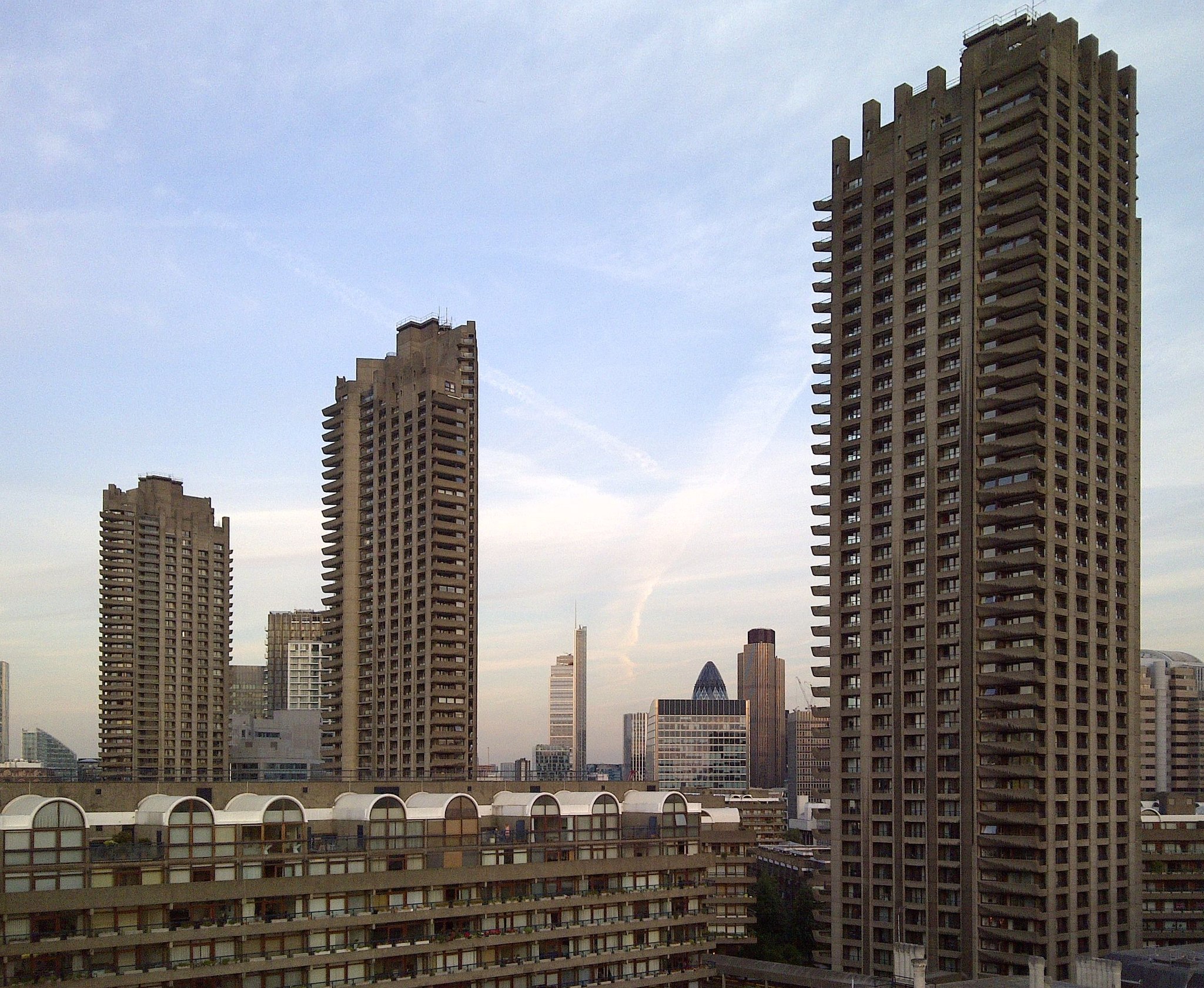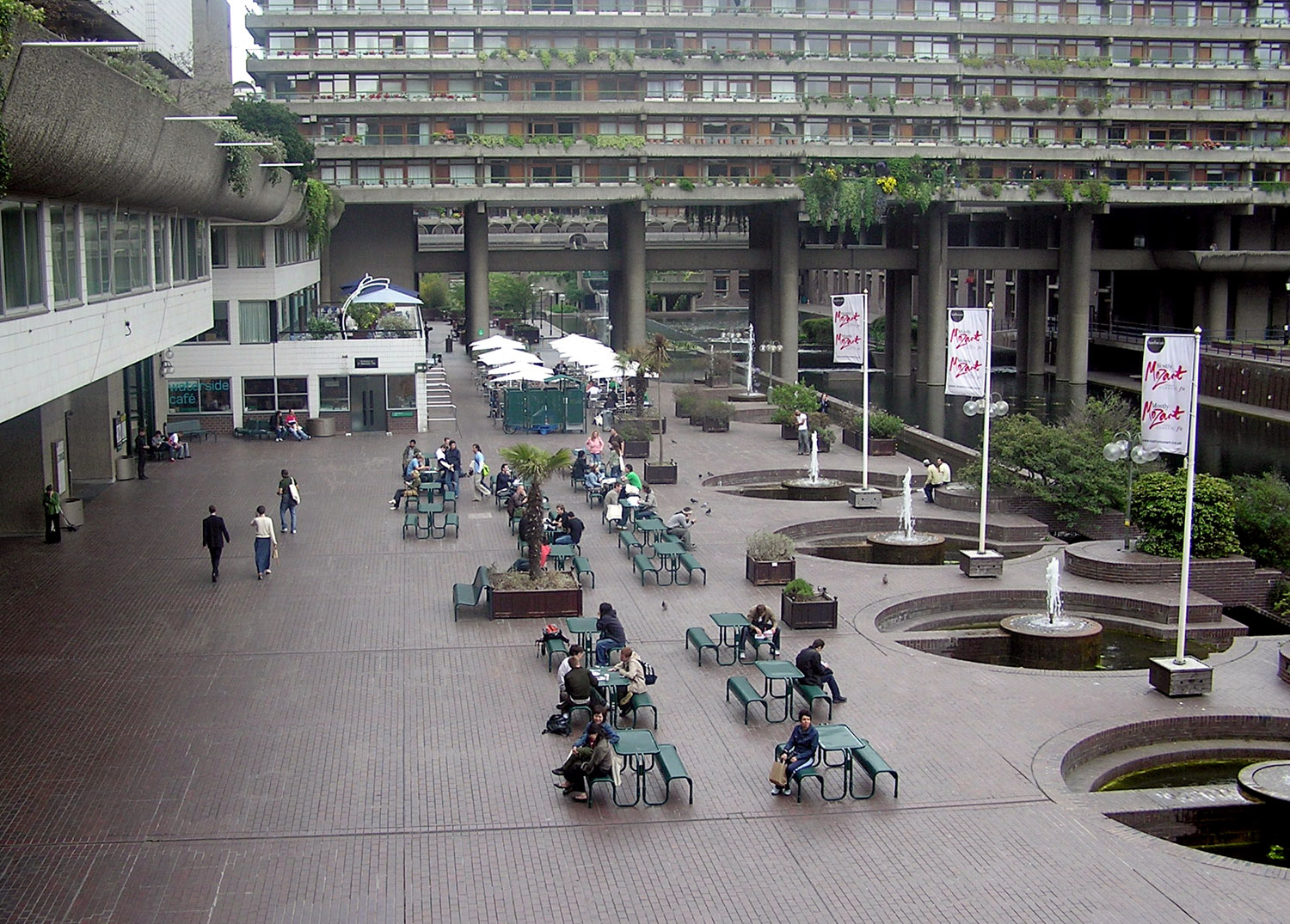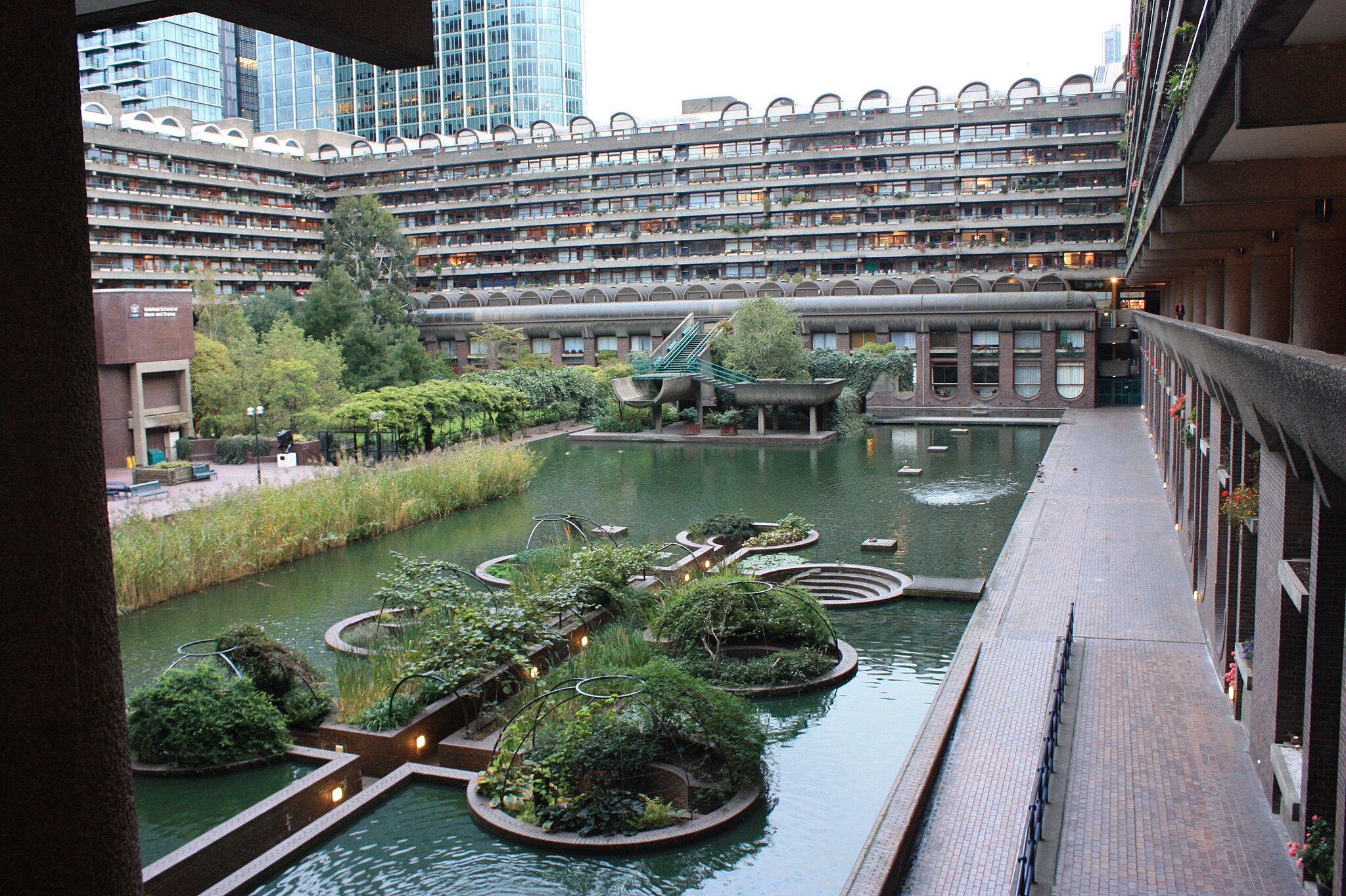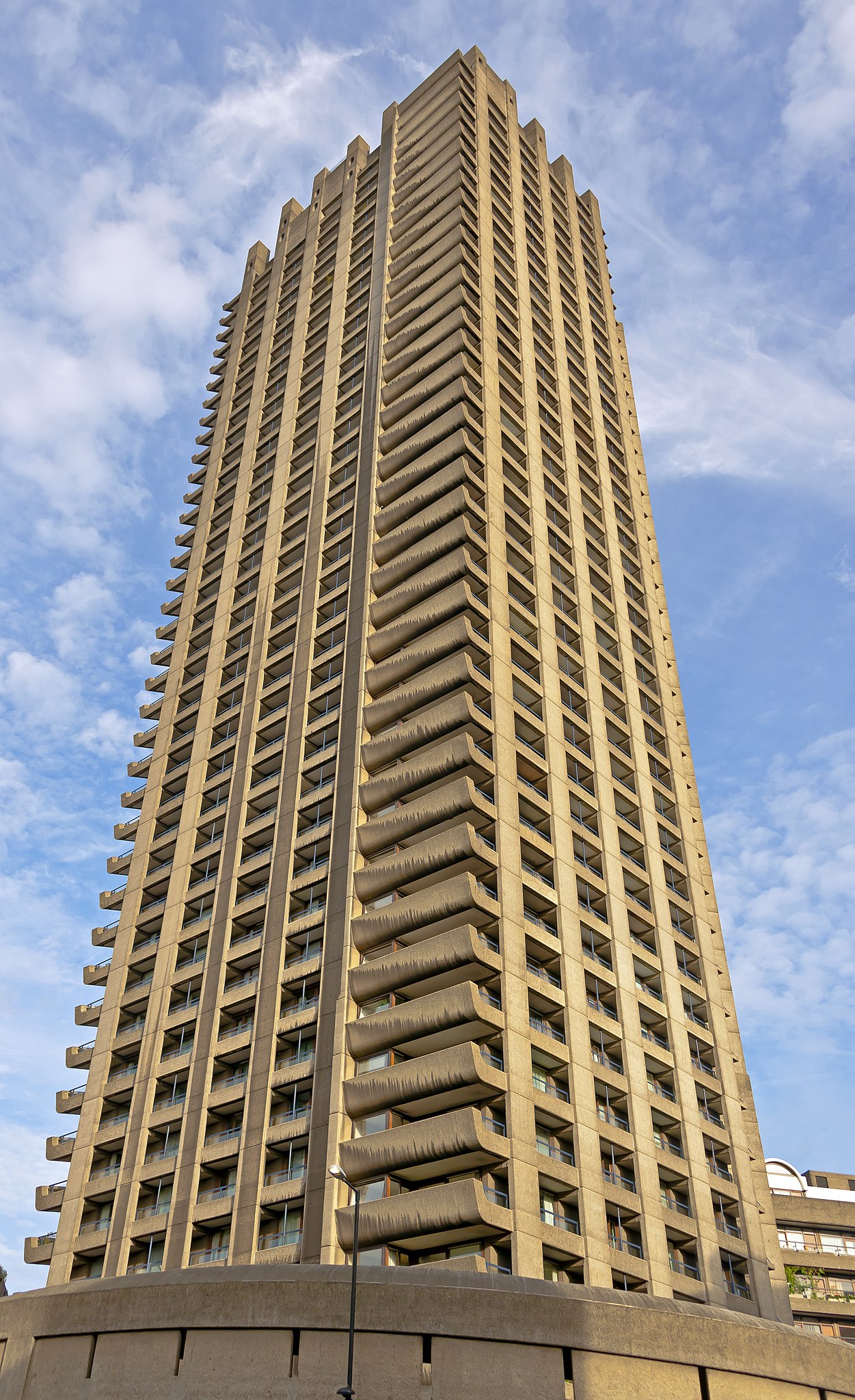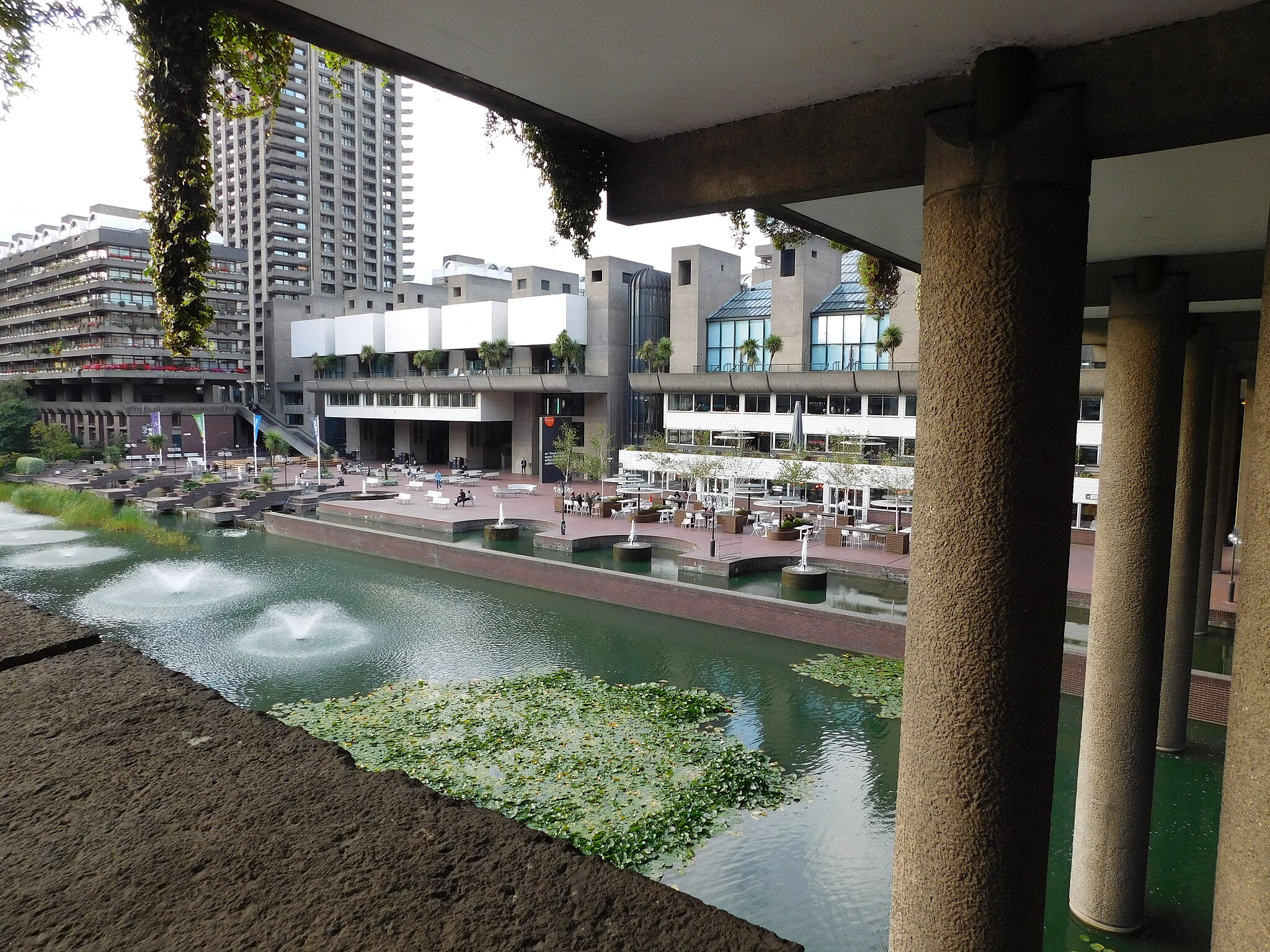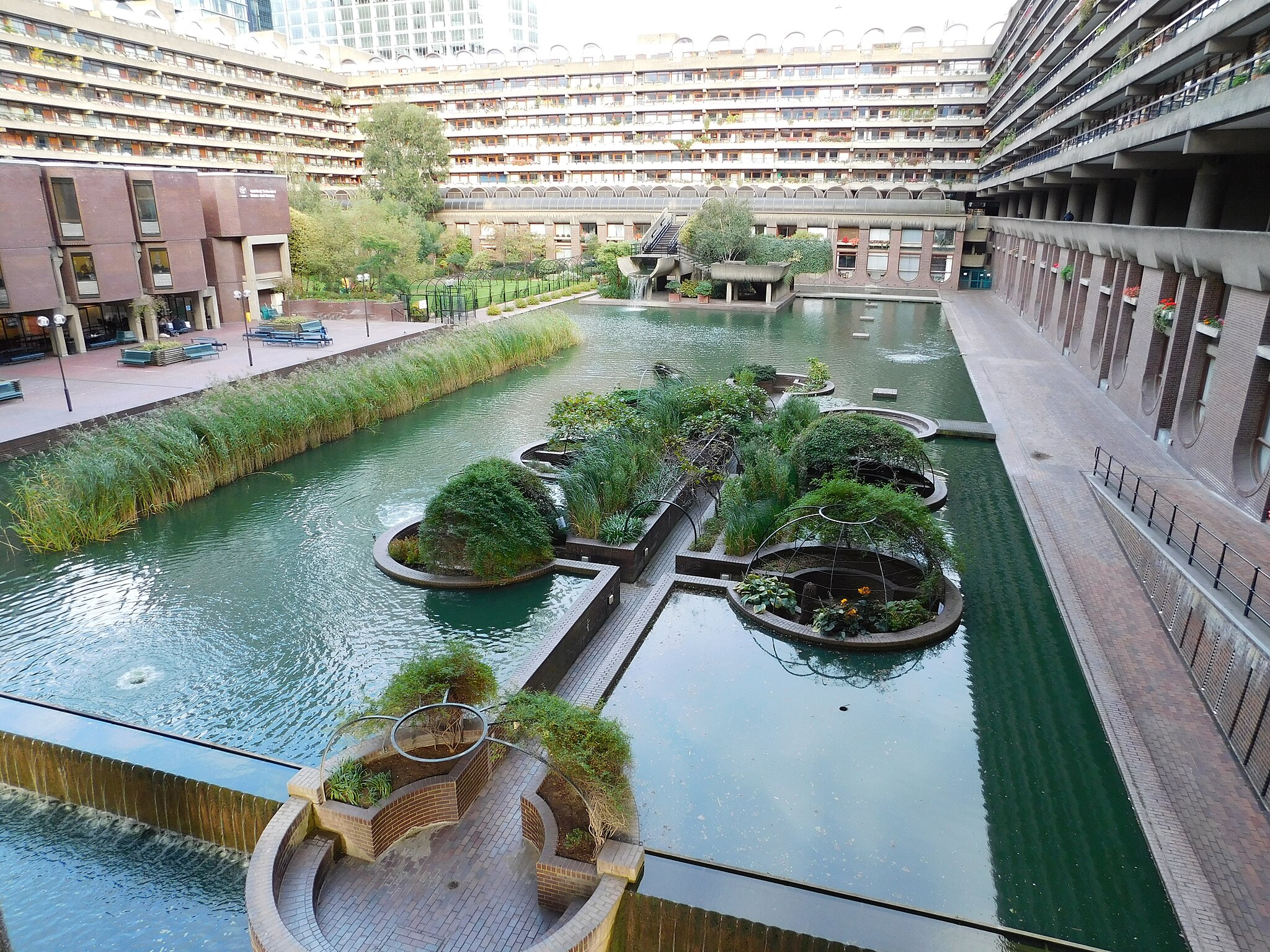In the centre of London, within the City of London, is the Barbican Estate – a remarkable complex of around 2,000 flats, flats and houses. It was built on an area destroyed by the bombing of the Second World War. The Barbican was originally built as rental units for the upper middle class and remains an exclusive site where prices for flats overlooking London reach spectacular heights. The complex is an outstanding example of British Brutalist architecture and is listed as a whole
During the Second World War, the city suffered severe damage and suffered many deaths. The densely built-up area where the Barbican now stands was virtually completely demolished. Discussions about the future of the site began in 1952 and the decision to build new housing was taken five years later
Photo by Paul the Archivist, CC BY-SA 4.0, via Wikimedia Commons
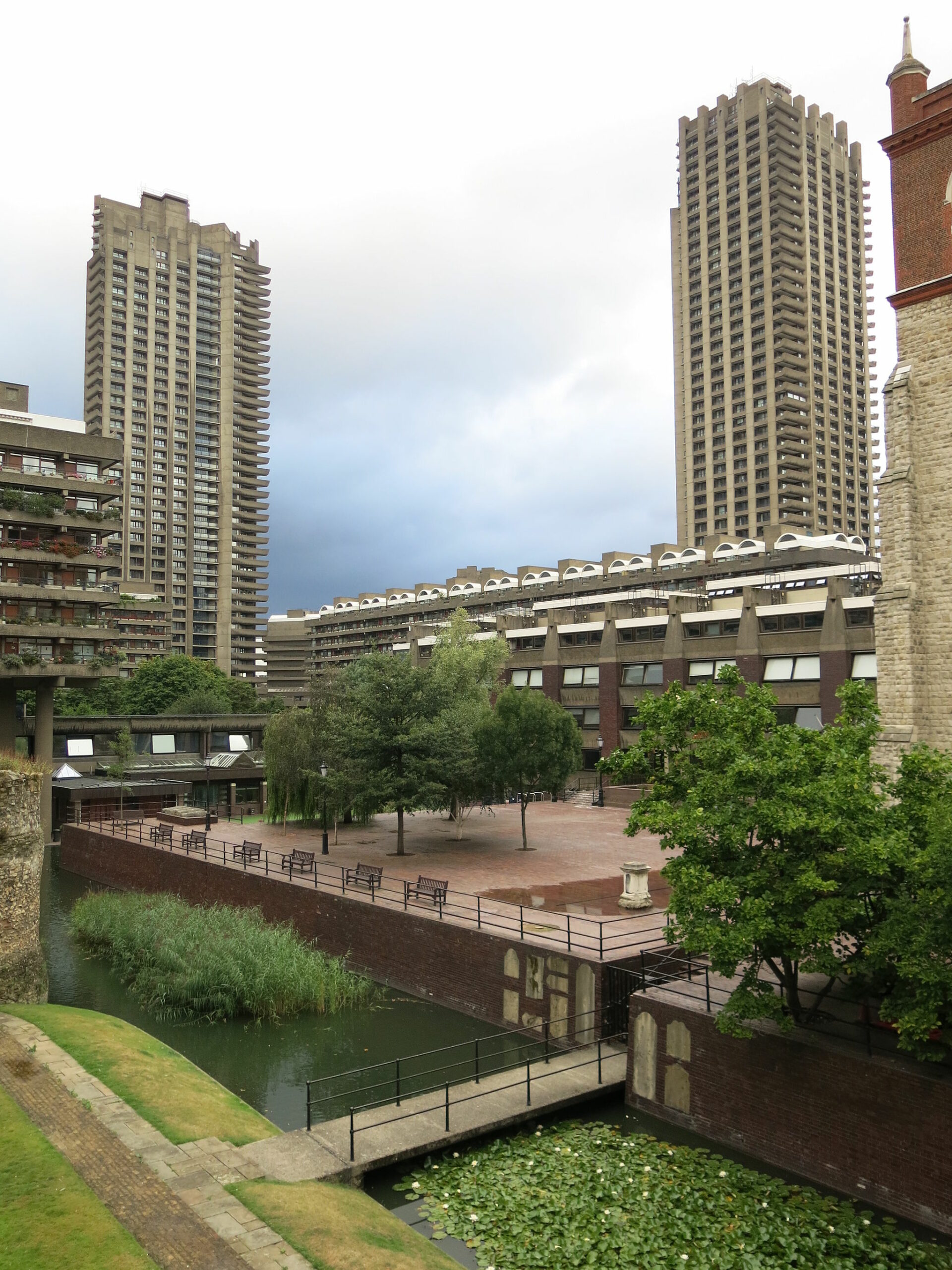
The estate was built between 1965 and 1976 on a 14-hectare site. The complex was designed by architects Chamberlin, Powell and Bon, whose first work was the landmark Golden Lane estate immediately to the north of the Barbican. Unlike its neighbour, however, the Barbican estate was not social housing. In its early years, a significant number of well-known politicians, lawyers, judges and bankers settled there. The first building on the estate, the Speed House, was officially opened in 1969 and the last, the Shakespeare Tower, was completed in 1976. Today, the Barbican is home to around 6,500 residents and, in addition to housing, there is an arts centre, cinema, cafes, bars and two schools. The buildings reflect an aesthetic involving the use of concrete on building facades that was popular in the UK in the 1960s and 1970s. The complex is also characterised by the complete separation of pedestrian and vehicular routes. The majority of pedestrian traffic is on pavements suspended at different levels, while roads and parking spaces are located below
Photo Suttonpubcrawl at English Wikipedia, CC BY 3.0, via Wikimedia Commons
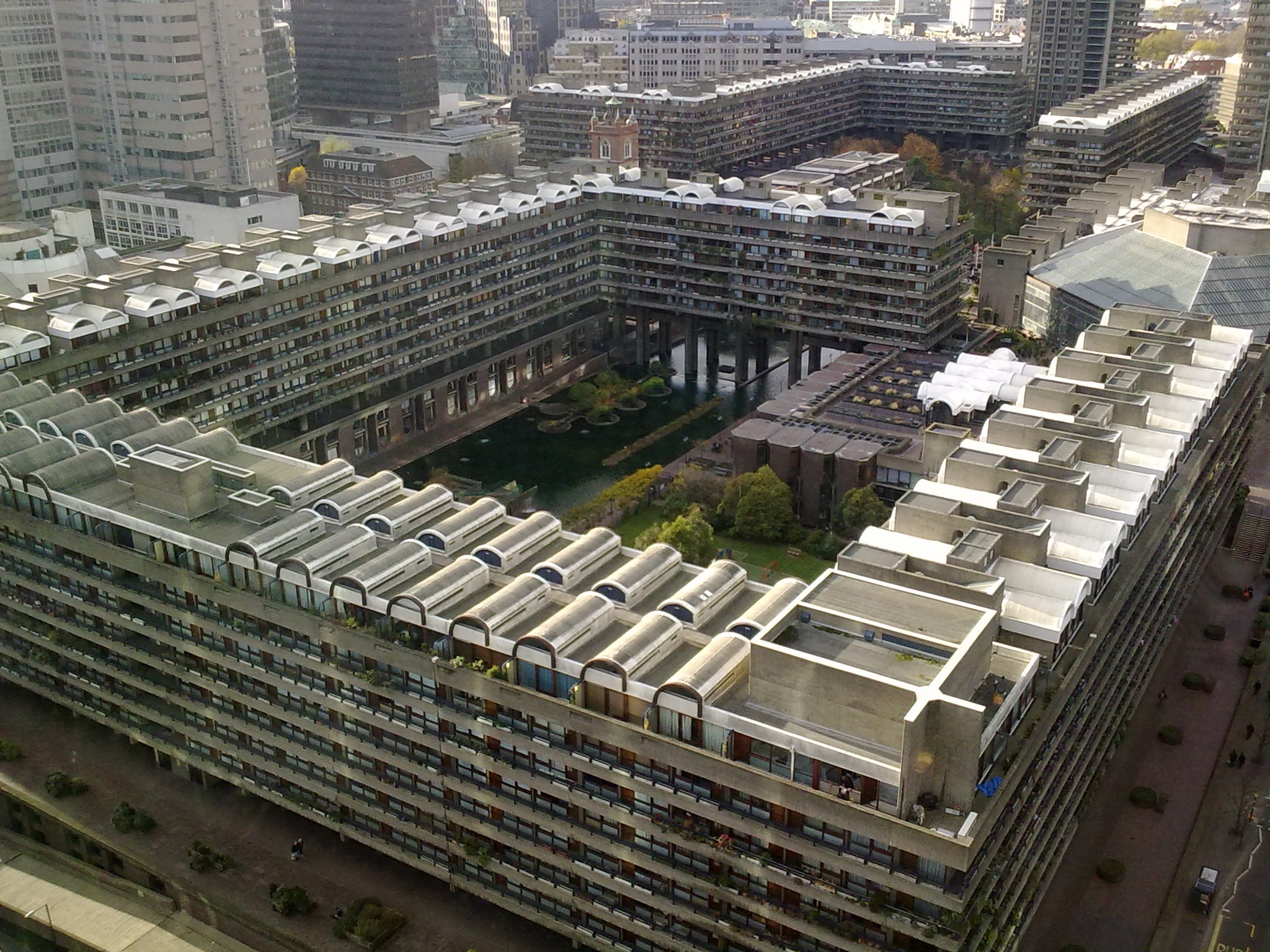
Arts Minister Tessa Blackstone announced in September 2001 that the Barbican complex would be listed as a historic building. It was singled out as a building of special architectural interest because of its scale, coherence and design ambition. The complex is architecturally important because it is one of the major examples of Brutalist architecture in London. The buildings are grouped around a lake and green plazas. The main buildings rise up to seven storeys above the podium level, which connects all the Barbican buildings, providing a pedestrian route away from the street
Source: designalive.co. uk, cityoflondon.gov.uk
Also read: Architecture | Brutalism | Urbanism | Monument | London | UK


